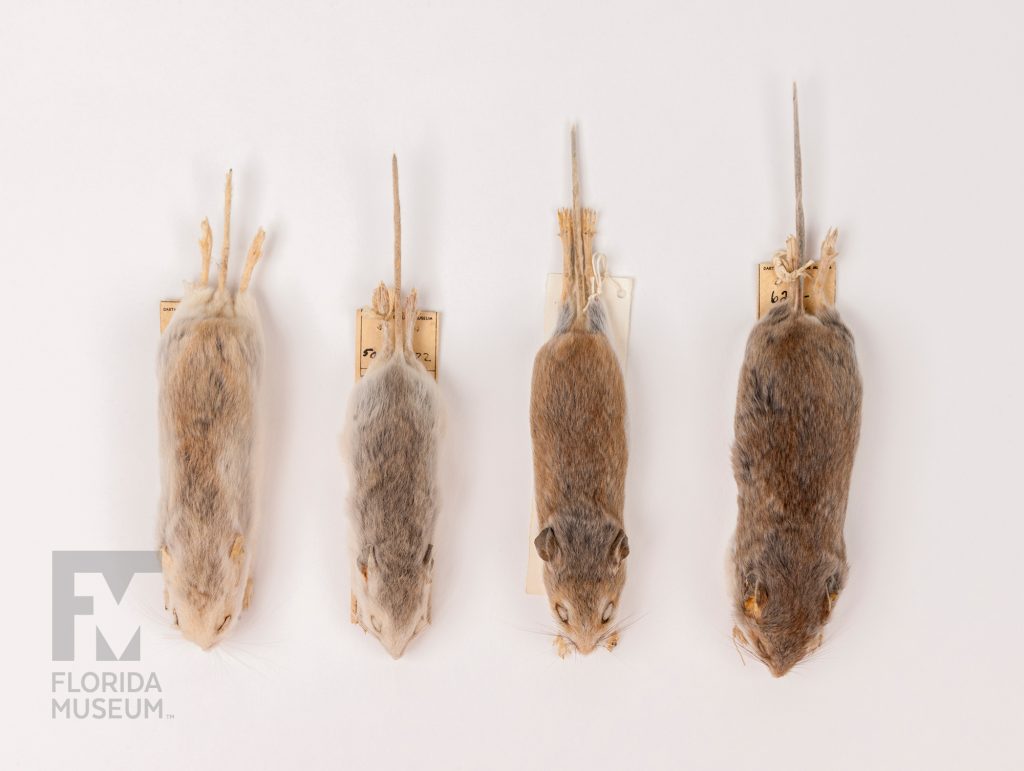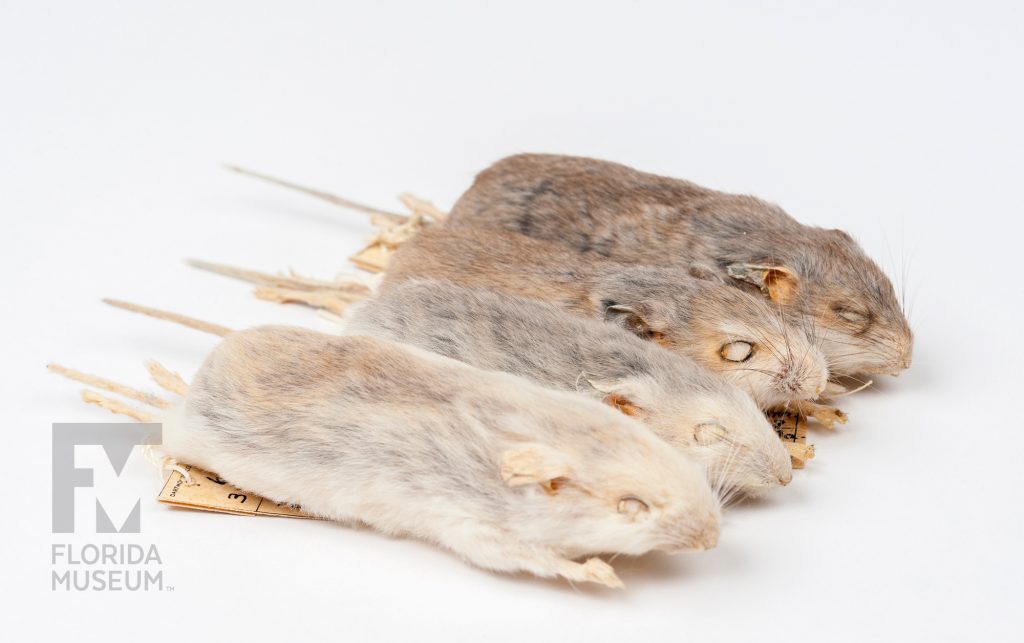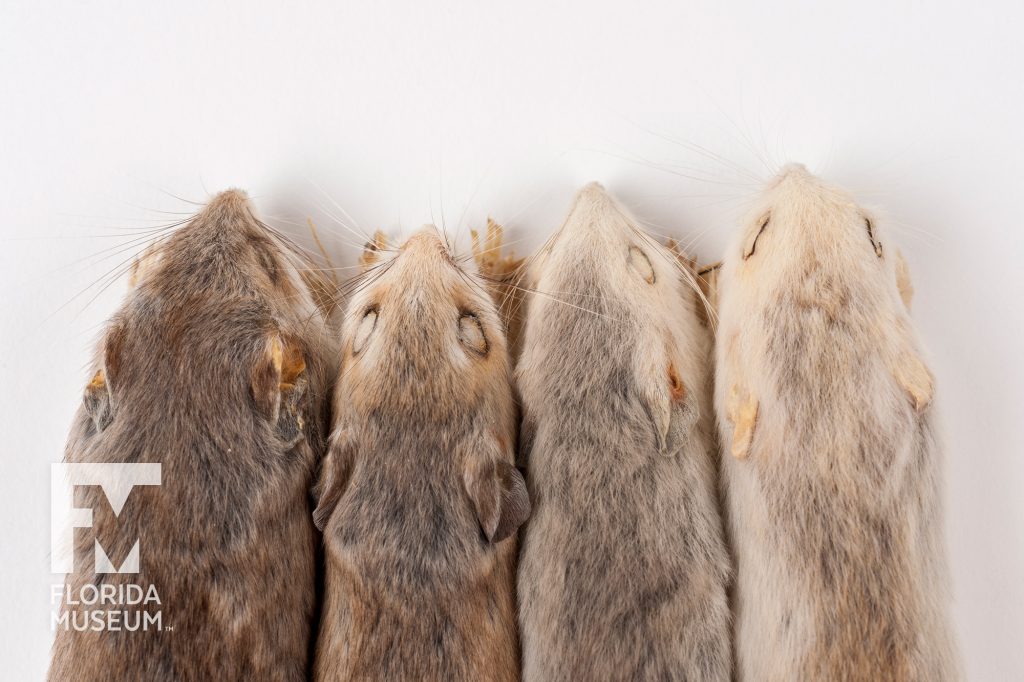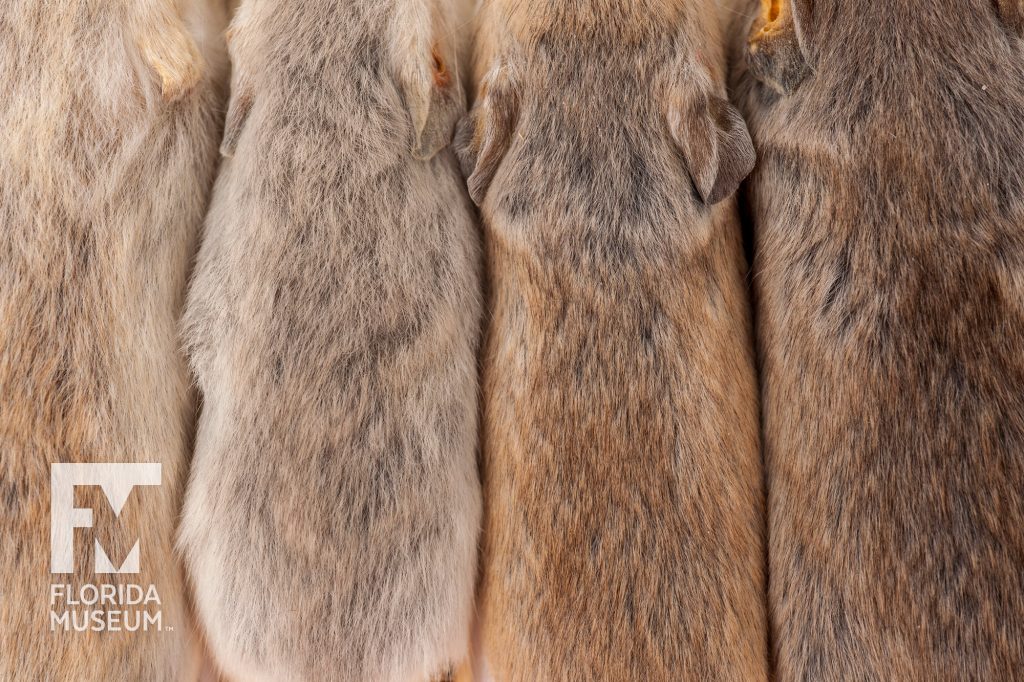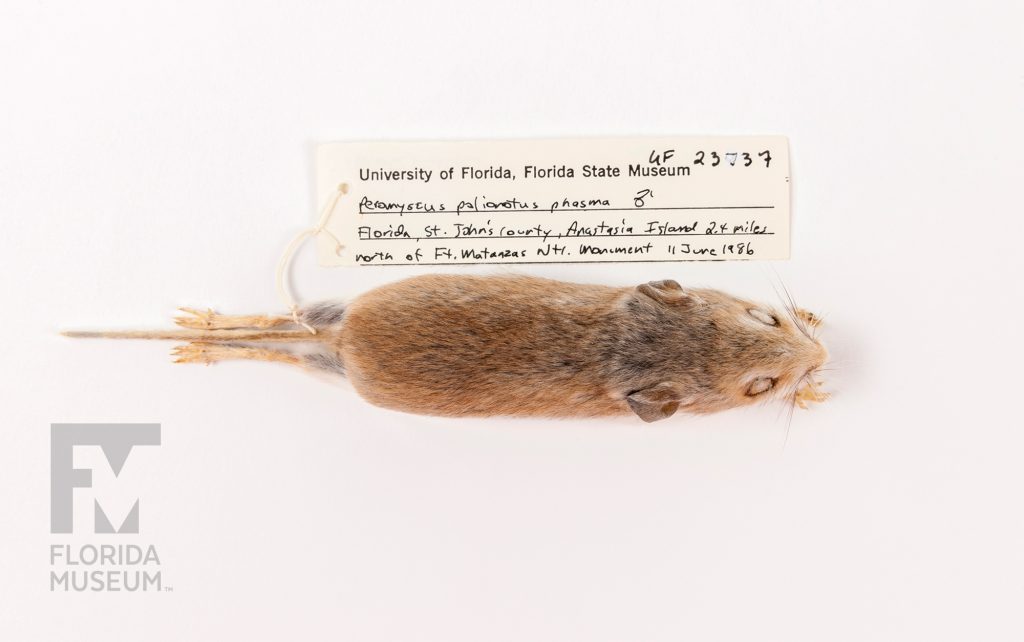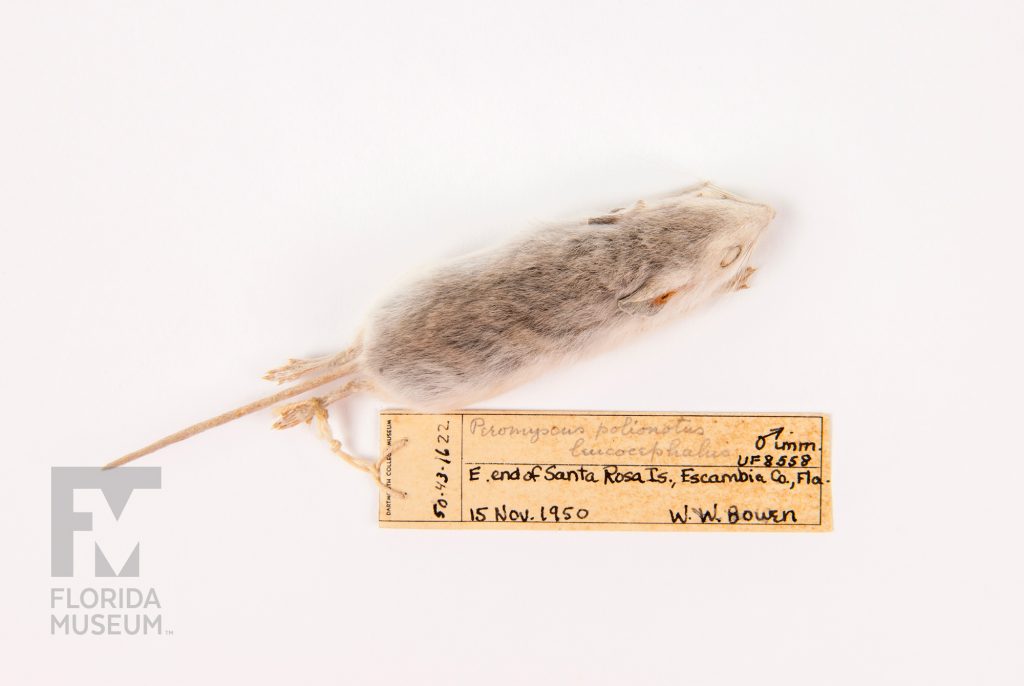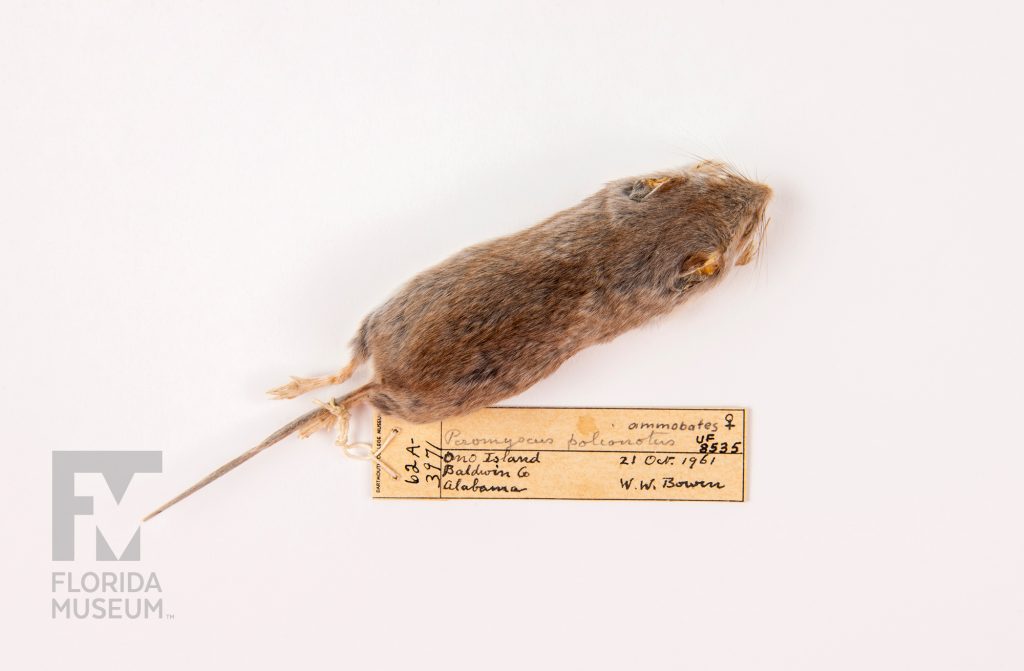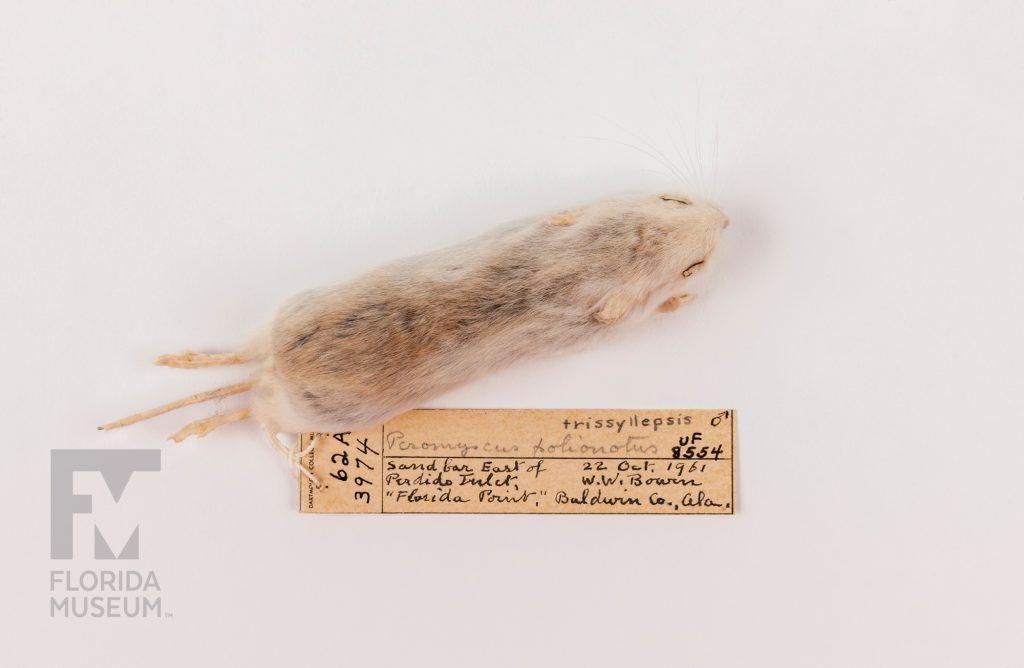Florida’s beach mouse populations are specialized to certain climatic conditions and coastal habitats unique to the small areas where they live. Each subspecies only survives in small patches of beach habitat, making them very susceptible to habitat disturbance.
Summary
Southeastern Beach Mice
St. Andrew beach mouse (Peromyscus polionotus peninsularis)
From Bay Co., Florida, Apr. 1985
Anastasia Island beach mouse (Peromyscus polionotus phasma)
From St. John’s Co., Florida, Dec. 1950
Santa Rosa beach mouse (Peromyscus polionotus leucocephalus)
From Escambia Co., Florida, Nov. 1950
Collection
Story
You might not notice these little guys or even ever see them, but Florida’s beaches are home to a rare and endangered species. The beach mouse is a subspecies of the more common Oldfield mouse. While the Oldfield mouse can be found in, you guessed it, old fields, agriculture landscapes and other open areas, the beach mouse makes its home on sandy beaches along the Gulf and Atlantic coasts.
There are eight species of beach mice that are found all along the coasts of Florida and Alabama, although one is already considered to be extinct. Along the Atlantic Coast, you might find the Anastasia Island beach mouse or the Southeastern beach mouse. Along the Gulf Coast, you can find the Alabama beach mouse, the Perdido Key beach mouse, the Santa Rosa beach mouse, the Choctawhatchee beach mouse and the St. Andrew beach mouse. As you might have guessed, most of these mice are named after the islands on which they are found.
Beach mice are nocturnal and avoid well-lit areas and houses, so you won’t ever find one inside. Another interesting fact about beach mice is that they are monogamous, which means a pair of beach mice will mate for life. As you can see from the various Museum study skins, beach mice tend to have pale white to grayish coats so they can blend in easily with the sand on the beaches where they call home.
Almost all the beach mice subspecies are state and federally protected because their habitat is under constant threat from beach development, erosion, predation by native and non-native species, and catastrophic events like hurricanes.
Five of the subspecies of beach mice were originally described by Wilfrid Wedgwood Bowen, a former research associate here in the Museum. In the mammal collections, we have a legacy of his work on this group in the form of over 2,000 flat skins and skulls from the laboratory work he did on the various beach mice subspecies; where he did breeding experiments to better understand how the pelage patterns varied between the subspecies, and where he tried to understand the genes controlling the various pelages that define the subspecies.
Verity Mathis
Collection Manager, Mammals
Florida Museum of Natural History
Exhibit
On display Sept. 23, 2017-Jan. 7, 2018, Rare, Beautiful & Fascinating: 100 Years @FloridaMuseum celebrated the Museum’s rich history. Each Museum collection was asked to contribute its most interesting items and share the stories that make them special. Though the physical exhibit is closed, this companion website remains online, providing an opportunity to experience the Florida Museum’s most treasured specimens.
Exhibit Area: On the Brink
Theme: Warning Story
 Want to see more? Explore more than 300 breathtaking color photos of plants, animals, fossils and cultural heritage materials from the Florida Museum of Natural History’s collections in the award-winning book All Things Beautiful available from the University Press of Florida.
Want to see more? Explore more than 300 breathtaking color photos of plants, animals, fossils and cultural heritage materials from the Florida Museum of Natural History’s collections in the award-winning book All Things Beautiful available from the University Press of Florida.
*This title was accurate at the time the exhibit was on display in 2017. Please visit the collection website to verify current staff and student information.
